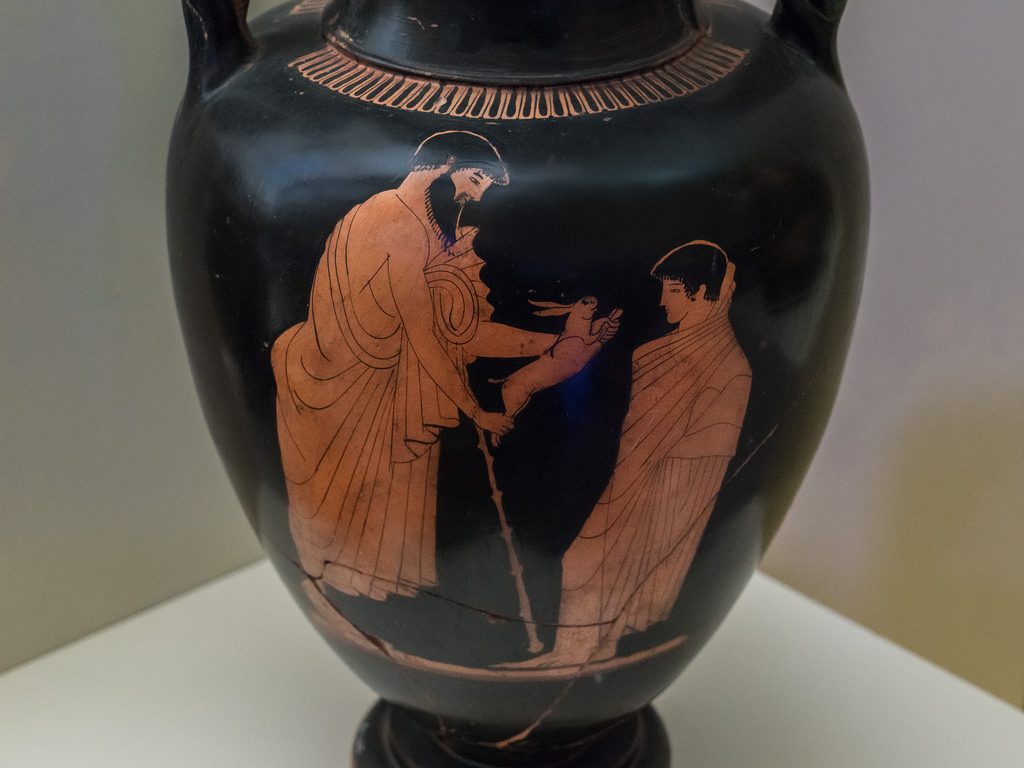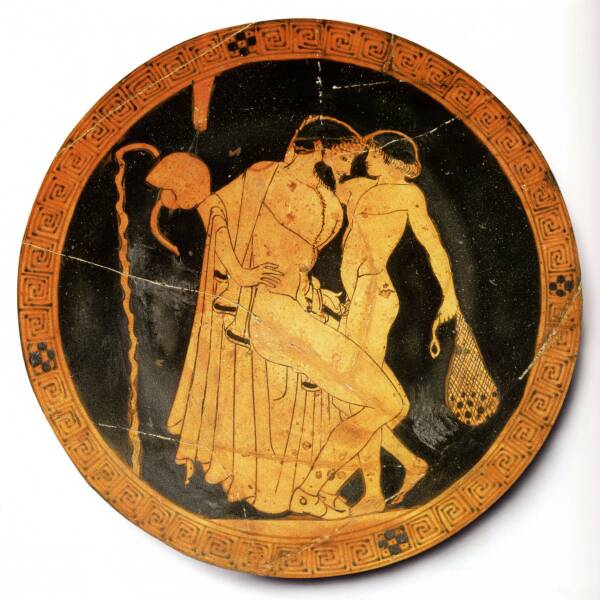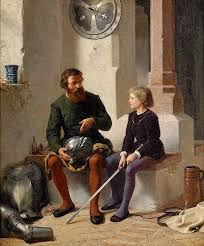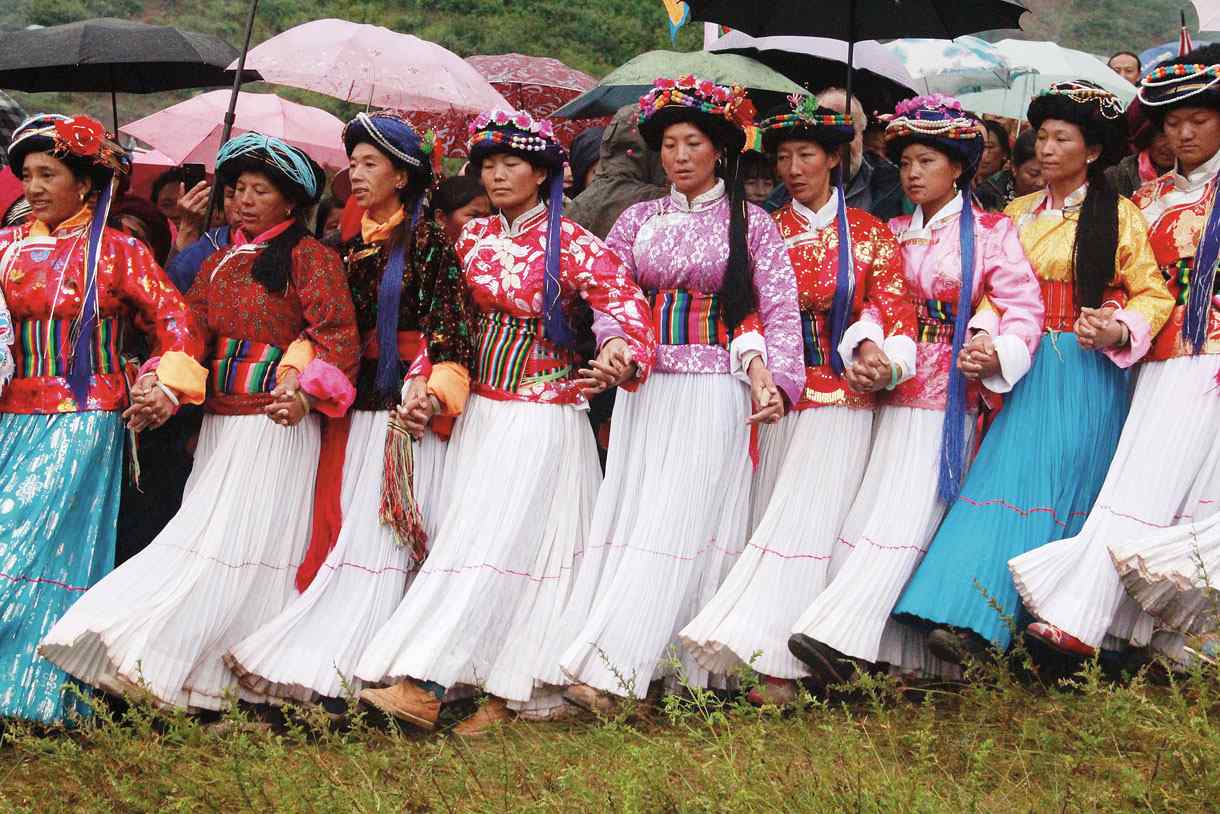Originally posted 2019-01-29 09:24:16.
Women have control over access to sex. At the same time, men invest heavily in the upbringing of their children, something unique amongst the Great Apes and rare in mammals, with only 5% of species exhibiting it. These are the bases of the social contract that has made humans so successful. Life has only one purpose: to ensure its own continuance.
Understanding how this works and the reasons why women control access to sex is relatively simple. Women need to ensure that the maximum number of their children survive to adulthood. This is not the same as the maximum number they could possibly have. A woman, beginning at the menarch, say age 14 and ending at the menopause, say age 45, could potentially have over 30 babies. But this is vanishingly rare, because in such a large family, many would die. Each child who dies is a huge loss to the woman but also to the community around her. Each represents a huge investment in time and resources that cannot easily be replaced. Simple human cultures cannot survive if they do not attend to this. Yet women are permanently receptive and fertile, whenever they are not pregnant. This means they can always get pregnant, if they do not control men’s access to sex. That control is essential to human species survival and we have developed numerous methods to permit it.
Pair-bonds
The human pair-bond depends in large measure upon male access to sex. Sexual gratification is enormously reaffirming. It bonds and rebonds each man to a particular woman and to her children (With a few exceptions that we’ll discuss, men must, for the system to work, believe the children they are being asked to care for are their own.) Yet the woman cannot simply have as much sex as the man would like, so she has to exercise control. Even in traditional societies, women rarely have more than eight or ten children in their whole reproductive life. This allows them time to ensure that each has the best chance of survival, by reducing competition with siblings. But it depends absolutely on the woman being able to control access to sex.
We are used to living in city-based, so-called civilised societies where, especially in the West, a toxic culture of consequence-free sex has grown up. This is predicated on modern contraceptive techniques which were not available thousands of years ago.
Let’s look at a couple of different examples which show how women control access to sex there.
The Mosuo

The Mosuo or Na people live in central China. They have a particular social structure in which the people live in clan compounds which are built around a central courtyard. These house family groups presided over by a matriarch. Unlike many other comparable cultures, however, Mosuo women do not marry in a conventional sense.
Each compound consists of one family, a matriarch, her sons and daughters and their sons and daughters. But the fathers of the children do not live with them. When a Mosuo girl comes of age, she is given her own bedroom, called her ‘flower room’. This is accessible from the central courtyard but also has a door to the street.
When the girl wishes to attract a suitor, she leaves the street door open; men will approach. A significant amount of negotiation may take place before an individual is allowed to enter, if one, indeed, takes the girl’s fancy. They will proceed, if all is well, to have sex and he may stay the night, although often he will not. However, if he does, he must leave in the morning and return to his own clan compound, where he lives with his family.
Paternal investment in this system is through a system called ‘partible paternity’. In fact, the father role for the children is provided by the woman’s brothers and uncles and not by the actual parent himself; the children may never know who their father is. The woman’s sexual partner plays the same role in his own clan.
Just why this system came about remains unclear but it is still practised by the Mosuo. Perhaps it has something to do with familial clan bonding, while still allowing for the addition of fresh bloodlines. But note: it places control over access to sex firmly in the woman’s gift. It is her room, her door, her lock and her key.
Some observers have seen the Mosuo system as ‘promiscuous’ but this is not really the case. Women may establish permanent relationships with one man, and he will spend his nights in her flower room — but she will still decide when to have sex, and he still has to go home in the morning. The door is hers to open or close and any man who objects will have to deal with her brothers and uncles.
Others will have ongoing relationships with a number of different men, which devolves to a system of polyamory, in which both men and women have multiple partners. This ensures that, for each man in the mood for sex, at least one of his partners is likely to be welcoming, and each woman, if she wants sex, can be fairly sure that at least one of her ‘husbands’ will pass through her door. So the sexual demands of both sexes can be met, by sharing the available partners.
The Zoé

Another, similar, case is of the Zoé people of the Amazon. These are also called ‘the marrying people’ because, again, they are polyamorous. Each man has several female partners and each woman several males. Children are raised communally but in this case, unlike the Mosuo, the men do take an active part in raising their own children, although they may not know which actual children are theirs. They are required by the nature of the system to also care for the children of their wives’ other male partners.
Again, the function of these arrangements seems partly to be to ensure that everyone can have sex when they most want it. Many observers have commented on how warm, loving and attached to each other people in both groups are. As well as this, however, partible paternity produces bonds between adults and children that transcend the immediate family and, again, help to bind the larger group together.
The above are systems that allow women to regulate their fertility such that they only have the numbers of babies that they can raise successfully to adulthood, while still allowing men enough access to sex to satisfy them. At the same time, the powerful family bonds bring adults together in the care and education of those children; this helps to unite the tribe and prevent it from splitting up.
Monogamy
But what might happen if there were permanent, fixed, monogamous bonds between men and women? Tension is bound to result, as women seek to maintain control over access to sex, as they must, to avoid unwanted pregnancies and potentially damaging burdens being placed on the whole group. Men, denied sex, may become aggressive and disgruntled, leading to friction and perhaps violence within the clan groups, something women are always at pains to contain. But cultures like these do not appear to have the sophisticated social mechanisms available to the Mosuo and the Zoé to regulate these behaviours.
Prostitution

One way to alleviate such tension is through prostitution. This, in many early civilisations, for example in Uruk in Sumer, was organised and regulated by the priestesses of the temple. In fact, there seems to have been significant overlap between the roles of priestess and prostitute. In other Mesopotamian cities, according to Herotodus, ordinary women were expected to prostitute themselves in the Temple; if they became pregnant, the children became wards of the Temple, ‘children of God’.
This model is widespread and was found throughout the Middle and Near East, India, Egypt and elsewhere. The practice was always centred on the Temples to the Goddess. Herotodus is often criticised by modern observers, particularly those with a political axe to grind; however, the lie is given to these claims by the fact that we can easily observe the same behaviours as he described, in populations today, for example amongst the hijra, trans prostitutes of India.
Pederastic Homosexuality
However, in addition to socially-approved prostitution, there was and remains, another system that has also been so widely adopted by humans that it is found everywhere: pederastic male homosexuality.
In this, at its most simple, an adult, married man will take a boy lover. The boy may live in the man’s house. The best-documented historical case of this form of homosexuality, which we might call ‘social homosexuality’ was in Ancient Greece.
Erastes and Eromenos

Here, the adult male was called the ‘erastes’, which means ‘lover’ and the young beloved the ‘eromenos,’ or ‘mistress’ — which should neatly describe the nature of the relationship. The eromenos played the role of a girl to the erastes’ man. She was submissive, he dominant; she was penetrated, he penetrated her.
The details of the arrangement varied with location and date, but in essence, the erastes undertook to complete the boy’s education as a man. He would teach him the manly arts of fighting, wrestling, hunting, rhetoric and so on during the day; but at night, the eromenos would receive a thorough education in the arts of love.
An erastes and an eromenos illustrating that this was indeed a sexual relationship
In some Greek states, the erastes would woo the eromenos with gifts, like freshly caught game, which showed his capability as a hunter. In others, he might approach the boy’s father and present himself as a suitable lover and mentor, listing his achievements. In Sparta, the arrangement seems to have been assigned, with young boys, as they entered the barracks at the age of seven, being paired with particular men.
In all, however, the sexual element of the arrangement — which was very real — was only a part of it. The erastes/eromenos pairing was designed to produce a ‘complete man’, as capable in bed as he was on the battlefield or orating to his peers.
(There is some confusion over the sexual techniques used; some scholars have suggested that ‘intercrural’ sex, in which the penis is slid between the oiled thighs of the beloved, was the only form. We can dismiss this as mere prudishness, since we have images on pottery that clearly show the act of pedication in progress. Intercrural sex does occur, both historically and at present, notably in Sub-Saharan Africa, but a significantly larger member is required than most Greeks possessed, judging by their art!)
Why was the boy’s father not his mentor? Why involve a stranger? In the first place, the close familial bond would have prevented direct instruction in sexual techniques. Incest has always been a human taboo and this was not different. Both father and son would have been shamed by such acts. As well as this, however, the sharing of boys in this way provided two clear advantages.
Social Rank

First, pederasty was exclusively practised by the upper echelons. In militaristic cultures, this was the warrior or, perhaps, knightly class. Being invited to undergo training for entry into this class was a great honour, not to be refused. We might glance forward a few centuries and regard the nature of knight/page relationships in the Middle Ages; when knights were far from home, sometimes, as in the Crusades, for years at a time, to whom would they turn for sexual gratification? Their pages, of course; and being a page was similarly, a great honour for the boy and his family.
Secondly, the bonds of love that certainly were formed between erastes and eromenos extended deep into the families and clans of both, bringing them together and unifying the whole society.
While adult homosexuality, that is, between two men old enough to grow beards, was not at all taboo in Greece, it was not nearly either as prevalent or as public as pederasty, which appears to have been a ubiquitous way of life. It was tolerated rather than being seen as an honourable, indeed necessary, stage of growing up. The cultures recognised that male bonds remained important, but the partners were expected to be discreet about it.
Plato

Thus when Plato railed against physical sex between men, he meant between two adult males. The proper love between two such men, he argued, was a spiritual one, which we now call ‘Platonic’.
His reasoning presaged the Romans’; the penetrated partner obviously became, if only when it was ‘his turn’ a catamite. Catamites were, throughout Greece and Rome, seen as having abandoned all male honour; they became, instead of men, women. In cultures like Athens, being a woman was a debased position; it was far less so in Sparta and there is more evidence of continuing homoerotic practice amongst adult men there.
Plato was not talking about pederasty. He was talking about the perceived dishonour of an adult male receiving the insertion of a penis. Pederasty and the erastes/eromenos pairing was not dishonourable, as long as, when he became old enough to grow a beard and take his adult place in society, the eromenos graduated and became, in his turn, an erastes, now educating — and pedicating — the younger generation.
Bruce Rind
Bruce Rind has proposed that pederasty might be an ‘exaptation’ that would maintain social order in times of trouble, famine or war by reducing the pressure on women for sex. Women would not, by this logic, be expected to satisfy men’s need for regular sex in times like these, because the warriors all had beautiful boys more than capable of standing in. In times of peace, however, we need to look elsewhere for a stimulus. After all, the Greek warrior classes were anything but effeminate.
Rome

The Greek warriors were not the only ones to indulge by any means, even within Western culture. The Roman system did not have the educational element that the Greek did, well, at least except in regard to the elasticity of certain muscles. Here, patrician men would seek out ‘pueri delicatii’ or ‘pretty boys’, juvenile slaves whose role was to deliver sexual satisfaction to their masters. Usually, these were castrated, either by crushing the testicles until they were useless or surgically removing them. This preserved their juvenile appearance long into adulthood.
If the castration were performed prior to puberty, the boy would retain his childlike voice and normally would not be erectile; if performed afterwards, he would have a more dusky voice but was usually able to get an erection. It was really a question of what exactly the master preferred. Penetration of one adult man by another, in Rome, was considered debasing for the penetrated, just as it had been by Plato, but since a slave was not really considered human in the sense that citizens were, a man’s honour could not be impacted by one. In any case, the famous Roman law proscribing adult male homosexuality, the Lex Scatinia, appears never to have been applied with any rigour.
Other functions
Pederasty clearly has functions other than contraception, however. The well-known example of the English Boarding School, the widely-reported proclivities of priests (not, by any means, all Catholic), its prevalence amongst sailors (who could ever forget the Village People’s ‘In the Navy’) and, of course, its endemic presence in Muslim cultures as well as many others, all suggest that the simple absence of visible, available women leads directly to the establishment of pederasty. So it’s not, in this case, so much about contraception but access to sex — any sex.
Whether or not one sees this as reasonable depends on one’s viewpoint and here, a certain Schadenfreude must be admitted; observing Western anti-sex feminists unable to criticise that which they certainly would elsewhere, when it occurs in an ‘equally valid’ culture like Islam, does lead to a lightening of humour. There is always delight in seeing such harpies hoist by their own petards.
Tenacious

Pederasty, once established, seems extremely tenacious. There is always a huge element of narcissism in any homosexual attraction since, in effect and as Vaknin rightly says, the individual is attracted to a mirror of himself. In pederasty, this seems subtly shifted such that the mirror image is that of the self when first seduced by a pederastic, older male.
How could it be otherwise, as the boy is plied with delicacies of the table, complimented on his handsome features and body, the fineness of his skin, perhaps relaxed with a cup of wine and then taken to mate like a girl? And how did he feel about the man who pedicated him? Did he see him as a demigod corporeal, his thrusting penis at once heavenly and overwhelming in its power?
It can be no surprise, then, that the older pederast, rather than becoming a catamite, or rather, remaining so, may seek to become his own lover, the man who deflowered him, deflowering in his turn the next generation. And this will be especially the case where the social structures around the man encourage him to follow this path. This creates a cycle that appears hard to break and may continue to exist long after the original reasons for it have either changed or disappeared.
One consideration to give a moment to might be the resurgence of pederasty in a society where women, as a result of feminist ideology, make the pursuit of sex too hazardous for men. Men have always weighed their options and, as we have seen, when sex with women becomes dangerous or impossible, they resort to other methods. In the circumstances that increasingly prevail in the West, as a result of overwhelming female privilege, will men turn again to pederasty, as they did in Greece and do in the Islamic world? Similar things have happened before.

Women’s control over access to sex ensures species success.
Despite the fascinating nature of these practices and the interesting speculations they provoke, however, all of the phenomena above, from polyamory, through partible paternity and prostitution to pederasty, serve one social function: to maintain women’s control over access to sex. This is the foundation of female privilege; it is why rapes of women are so much more severely punished than other physical assaults. (And conversely, why rapes of men are all but ignored: they cannot result in pregnancy.)
Men make this possible, through the voluntary use of substitutes for sex with women, when their superior physical strength means that they could just insist, as happens in other species. Rape is commonplace in nature, far more than allegedly homosexual behaviours are. (Male on male sex is nearly always dominance rape.) But in humans, it is very rare, because we have evolved techniques to satisfy men’s sexual urges and at the same time allow women control over access to sex.
This convention, or perhaps exaptation, has been central to human success as a species, by allowing the human clan system to evolve and flourish.. By agreeing to the convention that women control access to sex, punishing transgressors and adopting alternative sexual strategies, men have attenuated their need for sexual gratification, reduced the potential for violent, sex-based disruption, and thereby satisfied society’s need to ensure the survival of the children..
That survival is the only point of human life. So by agreeing to and upholding this social contract, men have been the principal agents of human success as a species.



